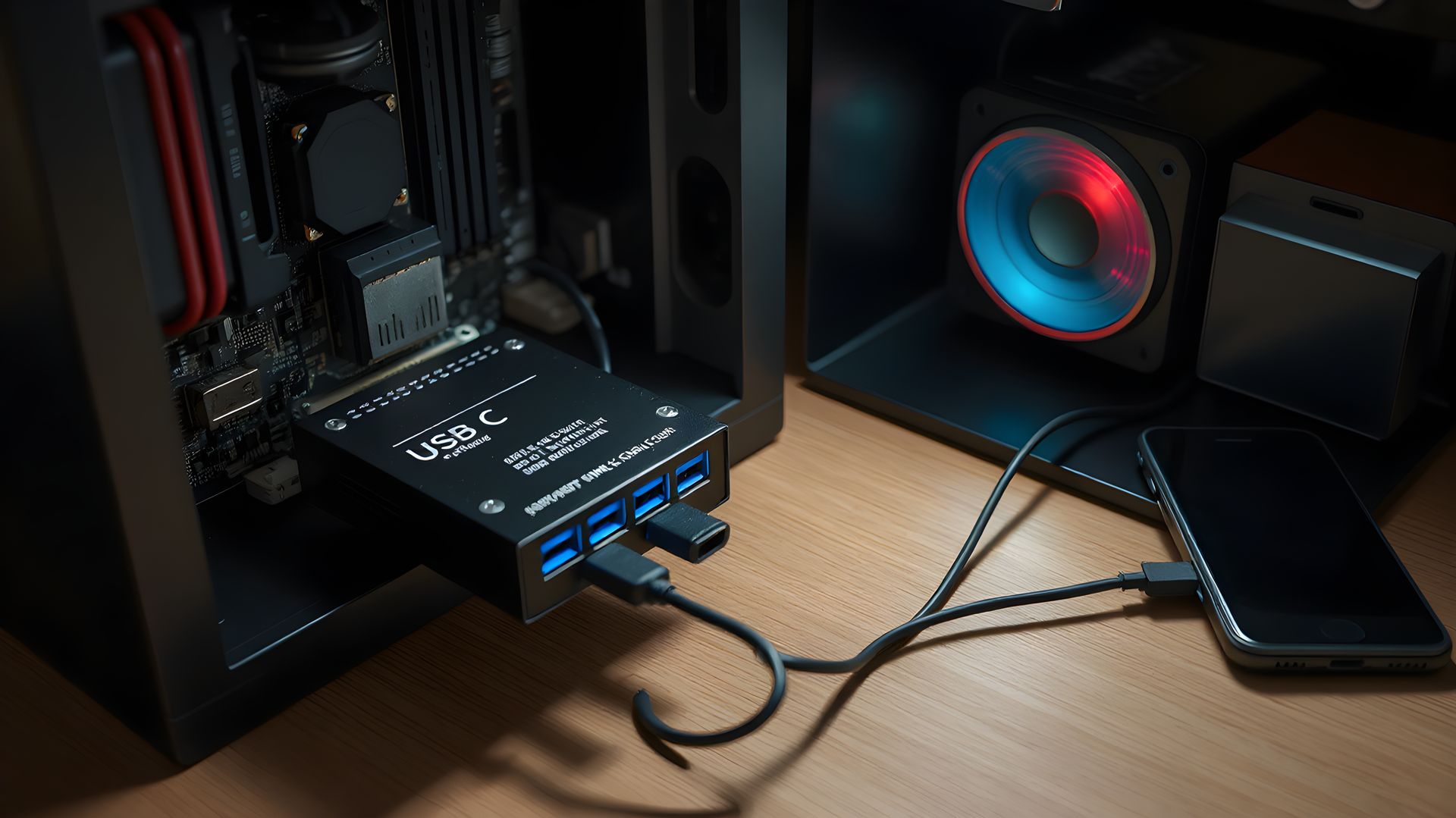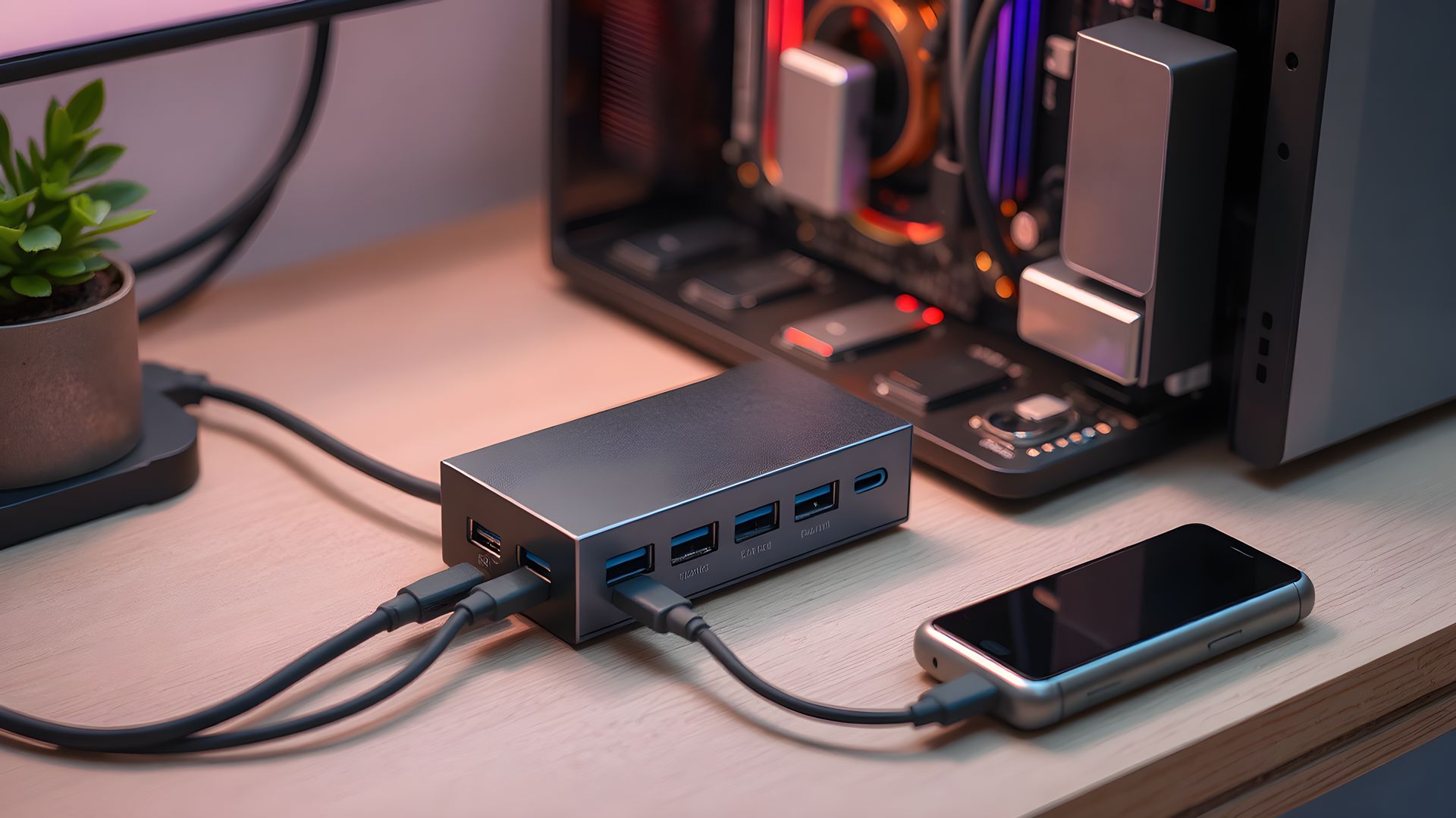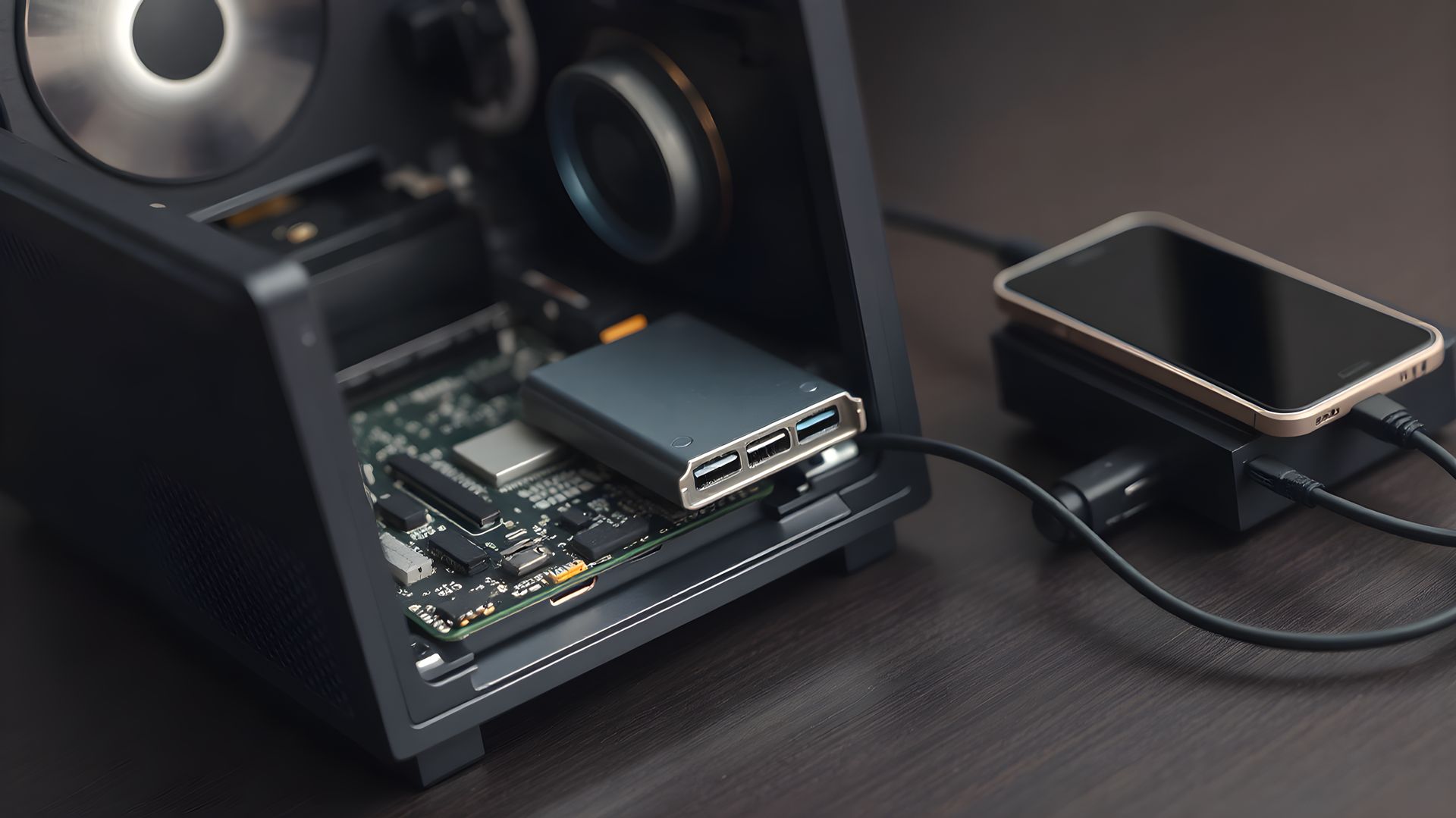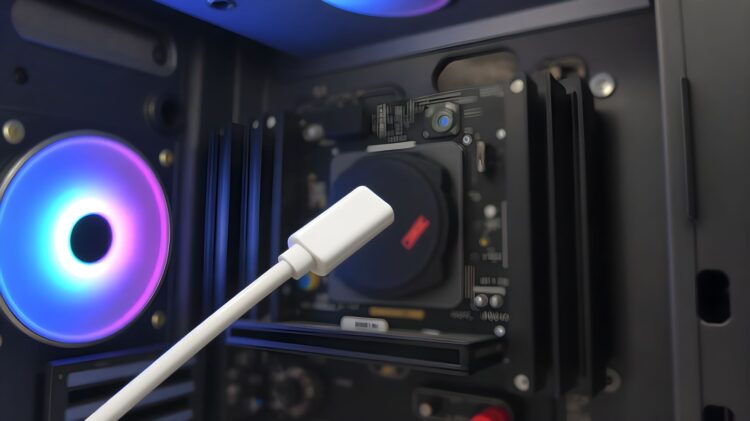With devices that rely on USB Type C becoming more common, PC enthusiasts are at a loss for these versatile ports. Some motherboards have another two Type-C sockets installed, but in practice, that never seems like enough, particularly when you start hooking up external drives, phones, and other peripherals.
That is why, if you consider the possibility of getting more USB Type-C ports on your motherboard without buying an entirely new system, how can you do that? Rest assured, we have some practical solutions to widen your connectivity.
How can you get more USB Type-C ports on your motherboard?
In this guide, we’ll delve into numerous ways to expand your USB Type C, including hubs, expansion cards, and even motherboards that give priority to USB Type C (including one very bold ASRock one). Now, let’s get into how to improve your USB Type-C game.

Use PCIe expansion cards to add USB Type-C ports
One of the simplest yet most effective ways to increase the number of USB Type C ports on your system is to use a PCIe expansion card. These cards plug right into the slot on your motherboard that starts obvious things like your CPU and stick right into other things like Type A and Type C.
Here’s what to look for when choosing a PCIe expansion card:
- Port configuration: Some cards come with just one or two Type-C ports, while others offer a mix of Type-C and Type-A. Choose based on your needs.
- USB standards: If you need higher speeds, Make sure the card supports the latest USB standards, such as USB 3.2 Gen2 (10 Gbps) or Thunderbolt 3 or 4.
- Compatibility: Check that the expansion card is compatible with your motherboard and has driver support for your operating system.
A PCIe card is a great solution for satisfied users who are happy with their current motherboard but need more USB-C connectivity without overhauling their system.

Consider an external USB hub with Type-C ports
If you don’t have much room to expand inside your PC case or you would like a more flexible solution for connectivity, an external USB hub might be what you need. Not all USB hubs look the same, and they are not equally powerful when it comes to adding more available Type C ports without Real Hardware installation.
Here are some key features to consider:
- Port variety: Some hubs offer a mix of Type-A and Type-C ports, while others focus entirely on Type-C. Choose a hub that matches your device needs.
- Power delivery: For devices that need extra juice (like phones or external hard drives), look for hubs with Power Delivery (PD) capabilities to charge devices while transferring data.
- Data transfer speeds: Ensure the hub supports USB 3.2 Gen2 or higher for fast data transfers.
An external hub is an easy, no-fuss solution, especially for users who don’t want to open their PC case. It also provides the flexibility to move ports around as needed.
Upgrade to a motherboard with more Type-C Ports
When building a new PC or planning a big upgrade, adding multiple Type-C ports to your motherboard is a wise purchase. While most modern motherboards come with extra Type-C ports for the increasing demand, some go further.
ASRock’s Z890 Taichi Aqua, well within the extreme example bracket, boasts 10 Type-C ports out the rear. This may be overkill for most users, but for people who need Type-C, it’s a good bet. Other motherboard options, such as the MSI X870 Tomahawk, offer a more balanced option with a mix of Type-C and Type-A port options.
When choosing a motherboard, consider:
- Port distribution: How many Type-C ports are on the rear I/O panel versus the front? Does it offer enough flexibility for your needs?
- USB standards: For maximum performance, make sure the ports support the latest USB standards, such as USB 3.2 Gen2 or USB4.
- Peripheral compatibility: If you still use many Type-A devices, make sure the motherboard has enough ports for them, too.
Upgrading your motherboard is a bigger investment than simply adding a PCIe card or hub, but it can future-proof your system for years to come.

Utilize front panel connectors
Most PC cases have front panel connectors supporting USB Type-C, but you might not get the most out of them. If you don’t have connectors on the front of your case that can handle the newer Type C connectors, you can buy a Type C front panel adapter to plug straight into the internal USB header on your motherboard.
Here’s what you need:
- Front panel adapter: Ensure the adapter is compatible with your motherboard’s internal connectors.
- Case compatibility: Check whether your case has room for additional front panel connectors or upgrades.
This solution won’t add Type-C ports to the back of your PC, but it will give you easier access to them without needing to reach around the back whenever you want to plug in a device.
Upgrading your motherboard with more USB Type-C ports doesn’t have to be tricky. No matter what type of user you are, whether you settle with a simple PCIe expansion card or an external hub or go through the upgrade to a full motherboard, there’s a solution for you. If you’re not ready to jump fully on the Type C bandwagon, the ASRock Z890 Taichi Aqua is a bold step. Still, other options are definitely available that are a better balance between Type A and Type C ports.
Ultimately, it’s all about getting a solution that fits your setup, has enough ports to handle today’s gadgets, and is future-ready for whatever tomorrow’s tech has to offer.
Image credits: Furkan Demirkaya/Gencraft AI





